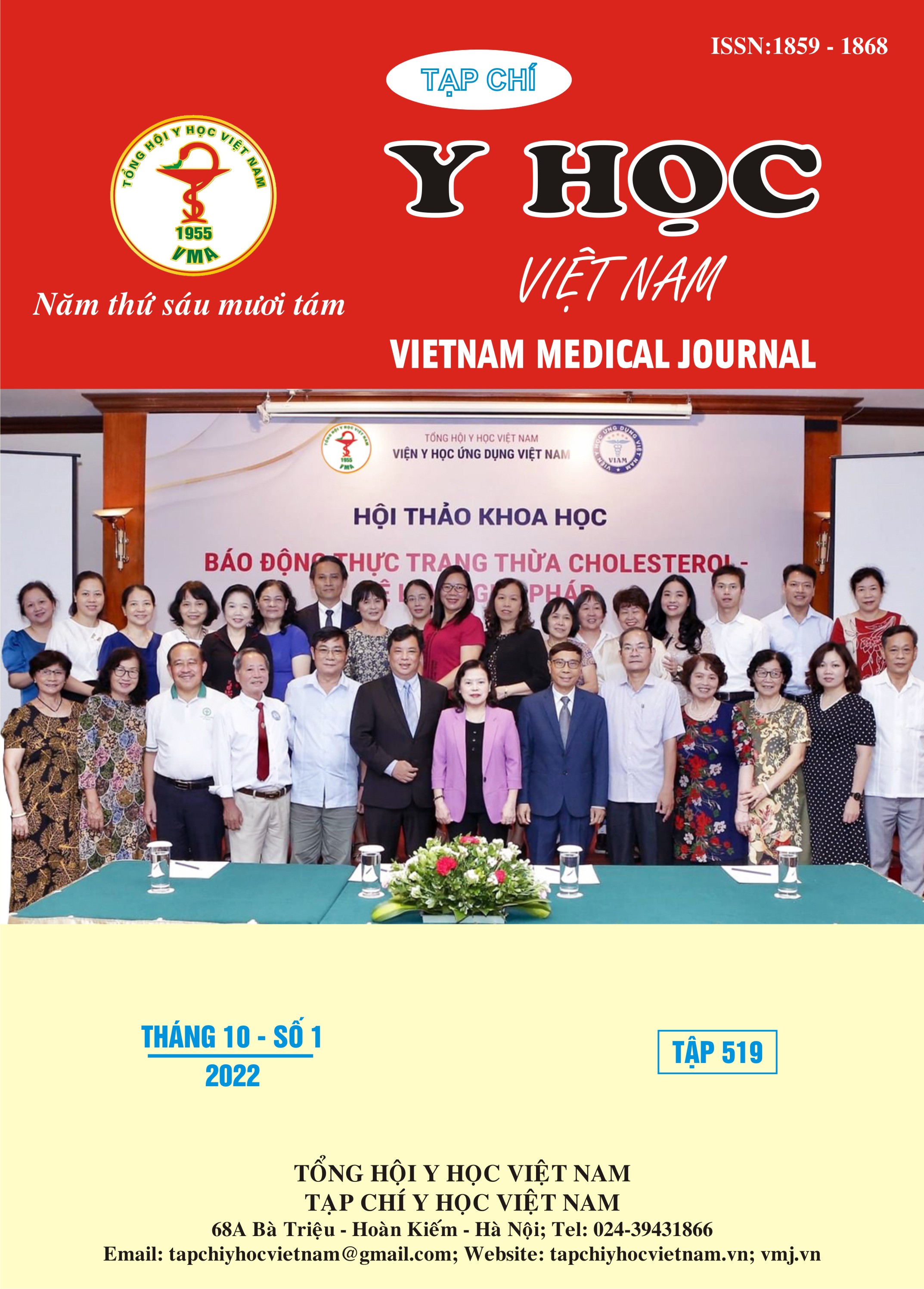CURRENT SITUATION AND ASSOCIATED FACTORS OF PERSONAL PROTECTION EQUIPMENT UTILIZATION AND HAND HYGIENE PRACTICE AMONG HEALTHCARE WORKERS AND SUPPORTING STAFF INVOLVED IN TREATMENT FOR SUSPECTED COVID -19 PATIENTS
Main Article Content
Abstract
Objective: Assess the current situation of using personal protective equipment and hand hygiene of staff in medical examination and treatment of patients with suspected Covid-19, and at the same time learn some factors related to compliance with use personal protective equipment and hand hygiene of staff in medical examination and treatment of patients with suspected Covid-19. Subjects and research methods: The study was conducted by descriptive and observational method with cross-sectional design over 95 staff participated in medical examination and treatment of patients with suspected covid -19. Research results: The rate of full compliance with the steps of wearing personal protective equipment (PPE) is 80%, compliance removal of PPE was 94.8%. The percentage of staff who correctly and fully complied with 7 steps of hand hygiene was 90.5%, and the rate of compliance with hand hygiene before and after removing gloves also reached 98.9% in both hand hygiene opportunities. The overall compliance rate (compliance with putting on and taking off PPE and proper - sufficient hand hygiene) was good in the group of staff with university and post-graduate education (86.1%), the group of seniors working over 5 years (80.8%), the age group over 35 years old (88.0%). The factors related to the general compliance are education level (OR = 8.06, 95%CI 2.79 – 22.29, p<0.001), working seniority (OR = 2.92, 95). %CI 1.04 – 8.18, p=0.042), age group (OR = 4.45, 95%CI 1.57 – 12.65, p=0.005).
Article Details
Keywords
Covid-19, Personal Protection Equipment (PPE), Healthcare workers, Hand hygiene
References
2. Deressa W, Worku A, and et al., “Risk perceptions and preventive practices of COVID-19 among healthcare professinals in public hospital in Addis Ababa, Ethiopia,” PLoS One, p. 16, 2021.
3. b “Effectiveness of precautions against droplets and contact in prevention of nosocomial transmission of severe acute respiratory syndrome (SARS),” PubMed, 2003.
4. “Hướng dẫn phòng ngừa và kiểm soát lây nhiễm SARS-COV-2 trong cơ sở khám chữa bệnh - QD số 5188/BYT,” Bộ Y Tế, 2021.
5. K. Kim và O. Lee, “Knowledge, Attitudes and Perceptions of Nurses on Personal Protective Equipment: Response to the Middle East Respiratory Syndrome Coronavirus,” J. Korean Acad. Fundam. Nurs, Vol 23, pp. 402-410, 2016.
6. M. E. Ashinyo, “Infection prevention and control compliance among exposed healthcare workers in COVID-19 treatment centers in Ghana: A descriptive cross-sectional study.,” PLoS One, Vol 16 (3), pp. 1-13, 2021.
7. Savoia, E., and et al., “Factors associated with access and use of PPE during COVID-19: A cross-sectional study of Italian physicians,” PloS one, Vol 15(10), pp. 1-12, 2020.
8. Hossain, M. A., and et al, “Healthcare Workers' Knowledge, Attitude, and Practice Regarding Personal Protective Equipment for the Prevention of COVID-19,” Journal of multidisciplinary healthcare, Vol 14, pp. 229-238, 2021.


